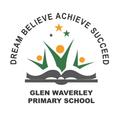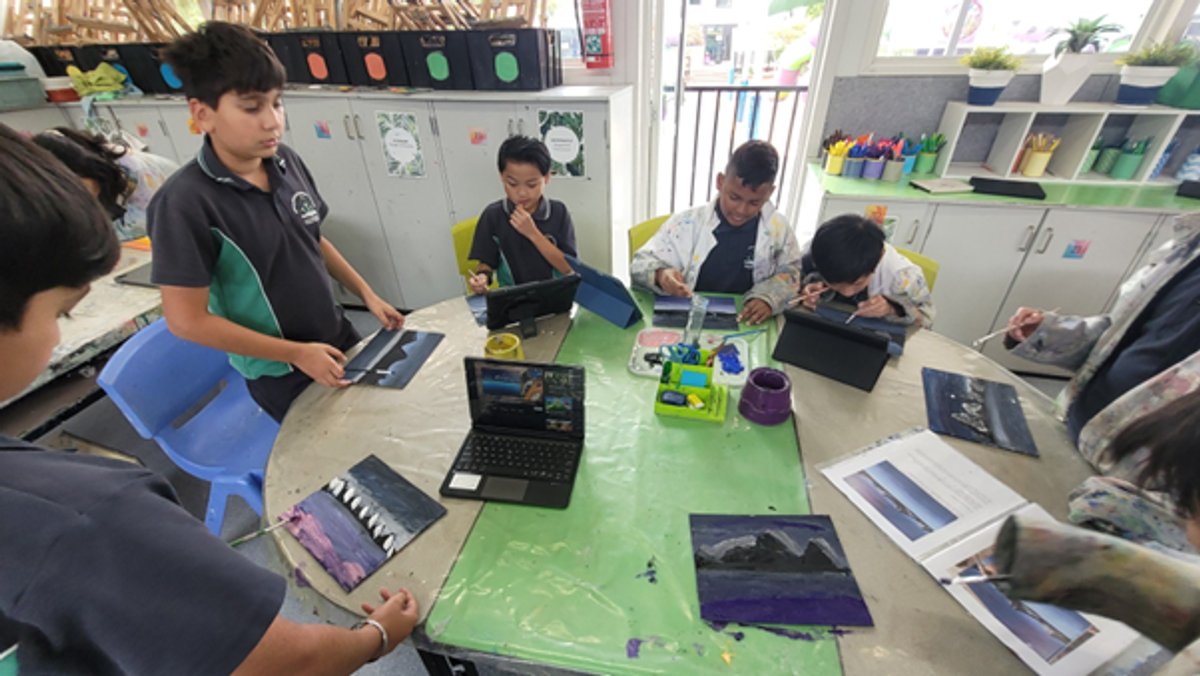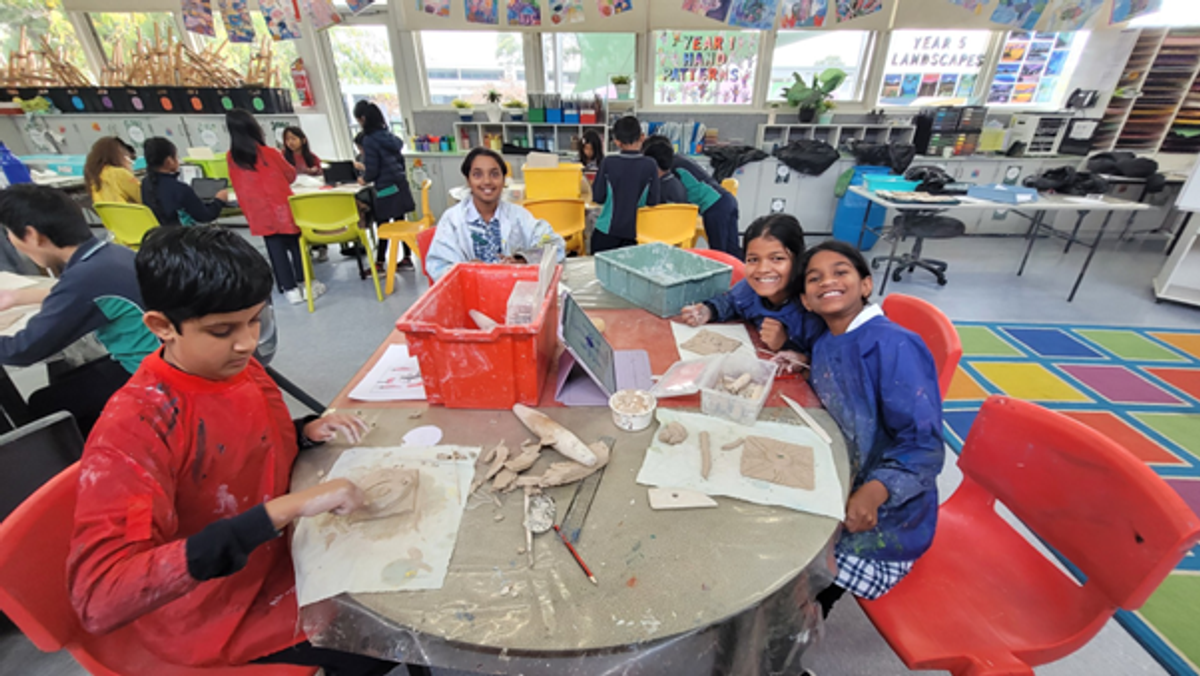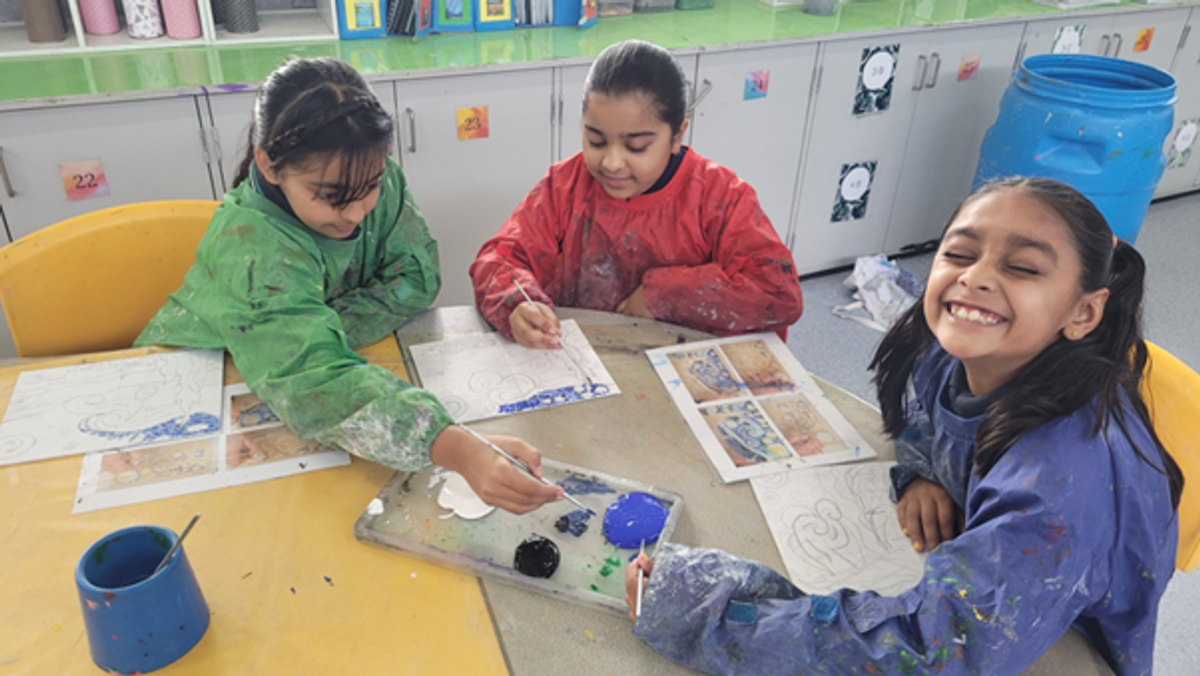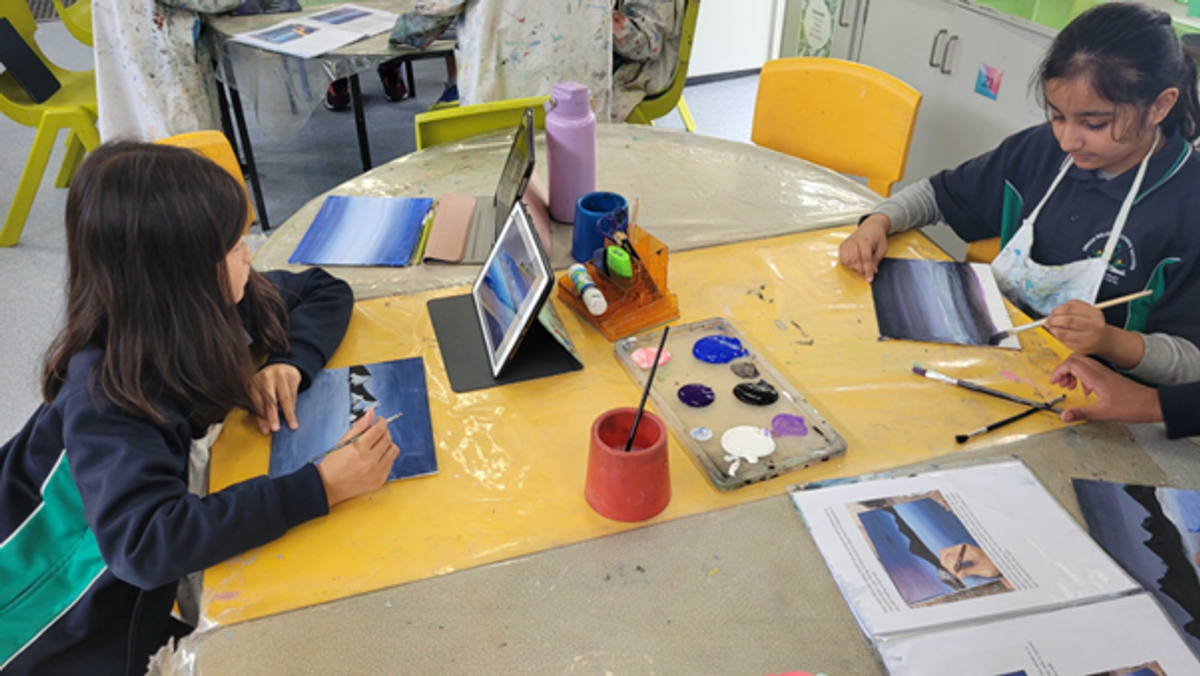Visual Art
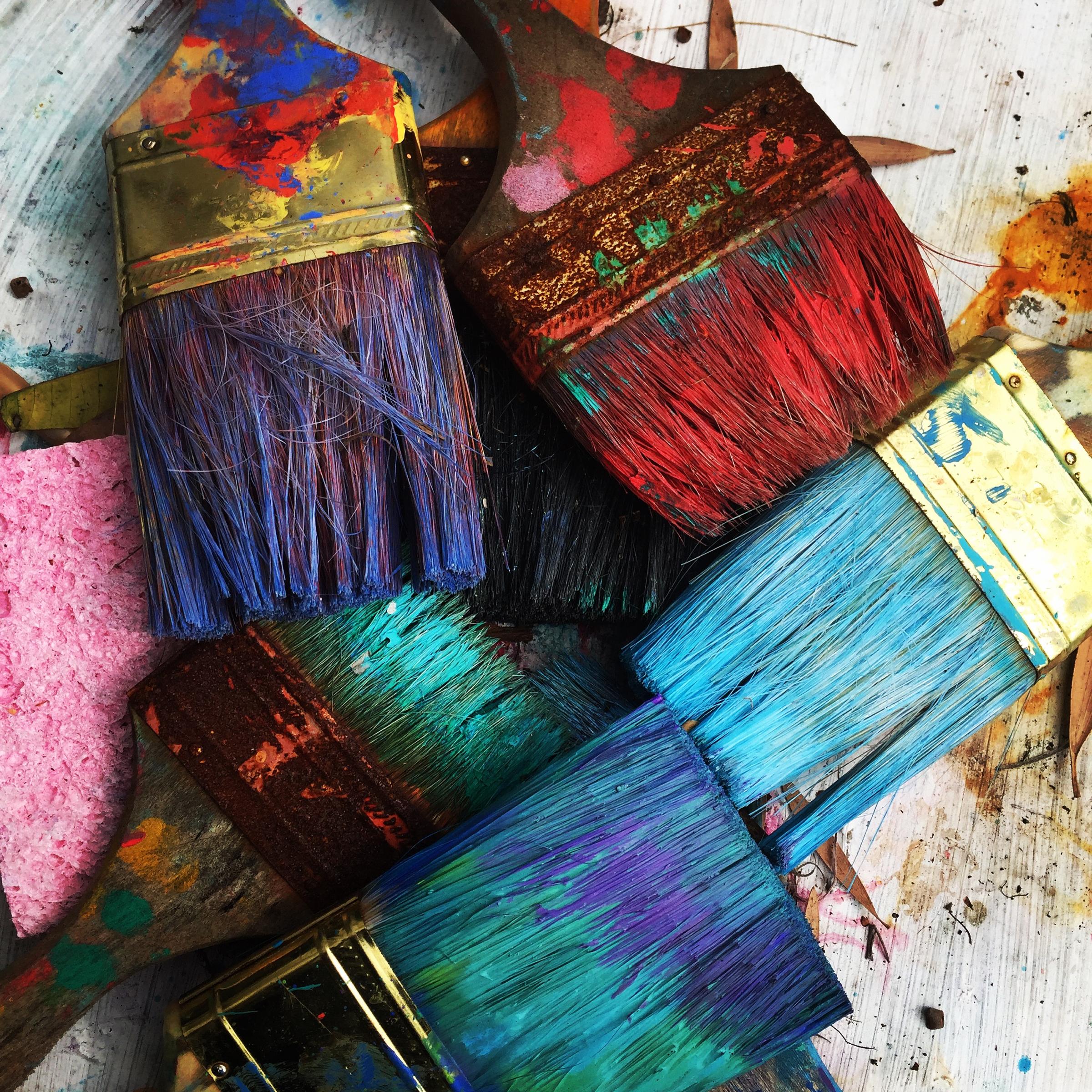
What a thrilling way to kick off Term Two! I trust you had a fantastic holiday filled with cherished moments with your loved ones. This term, we are embarking on another exciting journey of artistic exploration honing our skills with a diverse range of materials, techniques, and processes. From diverse brushstrokes of acrylic painting to bold hues of oil pastels, from the delicate washes of watercolours to the intricate details of collage making and the rich textures of clay.
Prep
In Term Two, our Prep students will continue delving into the world of watercolour art, applying their understanding of warm and cool colours from term one to create an artwork inspired by Marcus Pfister’s picture story book, ‘The Rainbow Fish’. In the process, they will further refine their fine motor skills and hand-eye coordination through the use of cutting techniques while also exploring the creative potential of collage making. Additionally, students will learn the use of the art element of line, using it to add intricate details and textures to their artwork.
Curriculum Links:
- Explore ideas, experiences, observations and imagination to create visual artworks (VCAVAE017)
- Experiment with different materials and techniques to make artworks (VCAVAV018)
- Respond to visual artworks and consider where and why people make visual artworks (VCAVAR020)
Key Vocabulary: watercolour resist, line, detail, texture
Year 1
This term, Year 1 students are deepening their understanding of Aboriginal and Torres Strait Islander cultures through visual storytelling. They will complete their narrative artworks by exploring the use of traditional Indigenous symbols, lines, and shapes—learning how these elements are used to share stories about people, animals, and Country. Students will consider how artists use pattern and repetition to communicate meaning and will be supported to create their own story-based artworks using paint. This unit also includes a focus on colour theory, where students will identify and mix primary, secondary, and tertiary colours to enhance their creative work. Through this learning, students are developing an appreciation for the rich cultural heritage of First Nations Australians and how art is used to pass down knowledge across generations.
Curriculum Links:
- Explore where, when, why and how people across cultures, communities, times, places and/or other contexts experience visual arts, including artworks created by Aboriginal and Torres Strait Islander Peoples VC2AVA2E01
- Explore ways of using visual conventions, visual arts processes and materials VC2AVA2D01
- Use visual conventions, visual arts processes and materials to create artworks that communicate ideas, experiences and observations VC2AVA2C01
- Present and share artworks in informal settings VC2AVA2P01
Key Vocabulary: pattern, Aboriginal art, symbols, primary colours, secondary colours, tertiary colours
Year 2
This term, students will begin by painting their clay sculptures, adding colour and detail to complete their creations. They will then move into a new unit exploring colour blending through the medium of oil pastels. Students will learn a variety of blending techniques and develop their understanding of complementary colours—experimenting with how these bold pairings can be used effectively in their artwork. The focus will be on building confidence in colour choice and application, as well as refining control and technique with pastels to create smooth, expressive transitions.
Curriculum Links:
- Explore ideas, experiences, observations and imagination and express them through subject matter in visual artworks they create (VCAVAE021)
- Experiment with different materials, techniques and processes to make artworks in a range of art forms (VCAVAV022)
- Create and display artworks to express ideas to an audience (VCAVAP023)
Key Vocabulary: detail, oil pastel, complimentary colours, blending
Year 3
Students in Year Three, will be continuing with their canvas project, focusing on re-creating ‘The Starry Night’ by Vincent Van Gogh. Throughout this project, students will refine their understanding of spatial arrangement and further develop their skills in creating tints and shades. They'll also learn to emulate Van Gogh's distinctive brushstroke style in their own paintings. Through careful analysis of Van Gogh's work, students will explore how he used visual elements to convey specific emotions and meanings in his artwork.
Curriculum Links:
- Explore ideas and artworks from different cultures and times as inspiration to create visual artworks (VCAVAE025)
- Explore visual conventions and use materials, techniques, technologies and processes specific to particular art forms, and to make artworks (VCAVAV026)
- Identify and discuss how ideas are expressed in artworks from a range of places, times and cultures, including artworks by Aboriginal and Torres Strait Islander peoples (VCAVAR028)
Key Vocabulary: Vincent Van Gogh, The Starry Night, brushstrokes, art elements, spatial arrangement
Year 4
This term, Year 4 students will begin by painting their completed Islamic-inspired clay tiles, focusing on applying the art elements of colour, line, and shape to enhance the traditional Islamic style. They will explore how decorative symmetry and geometric designs can be elevated through careful colour selection and detailed painting techniques. Students will then further develop their clay skills by exploring texture manipulation using techniques such as stippling, layering, impressing, and carving. This hands-on experience will help them understand how texture adds visual interest and meaning to three-dimensional artworks.
Curriculum Links:
- Explore ideas and artworks from different cultures and times as inspiration to create visual artworks (VCAVAE025)
- Explore visual conventions and use materials, techniques, technologies and processes specific to particular art forms, and to make artworks (VCAVAV026)
- Identify and discuss how ideas are expressed in artworks from a range of places, times and cultures, including artworks by Aboriginal and Torres Strait Islander peoples (VCAVAR028)
Key Vocabulary: stippling, impressing, texture, art elements
Year 5
This Term, Year 5 students will be continuing their large landscape canvas painting projects based on student choice. Students will be focusing on using a combination of different painting techniques and materials to develop detail in their landscapes. They will be exploring the subtleties of colour, including the value of colour, tints and shades to add depth and complexity to their painting. Additionally, students will be experimenting with texture and form to bring their painting to life. Furthermore, students will enhance their critical thinking skills by learning how to describe a variety of painting techniques.
Curriculum Links:
- Explore visual arts practices as inspiration to create artworks that express different ideas and beliefs (VCAVAE029)
- Select and apply visual conventions, materials, techniques, technologies and processes specific to different art forms when making artworks (VCAVAV030)
- Identify and describe how ideas are expressed in artworks by comparing artworks from different contemporary, historical and cultural contexts, including artworks by Aboriginal and Torres Strait Islander peoples (VCAVAR032)
Key Vocabulary: blending, sgraffito, stippling, splattering, round brush, fan brush
Year 6
This term, Year 6 students will complete their artworks inspired by Aboriginal and Torres Strait Islander traditions, focusing on landscapes that express a strong connection to Country. Through these works, they will explore how careful placement of tone can create the illusion of light and enhance the depth and atmosphere of their compositions. Following this, students will embark on a student-led process project, where they will choose their own artistic theme and medium. They will begin by researching ideas and gathering inspiration from artists to inform and support their planning and creative development.
Curriculum Links:
- Explore visual arts practices as inspiration to create artworks that express different ideas and beliefs (VCAVAE029)
- Select and apply visual conventions, materials, techniques, technologies and processes specific to different art forms when making artworks (VCAVAV030)
- Create and display artwork considering how ideas can be expressed to an audience (VCAVAP031)
- Identify and describe how ideas are expressed in artworks by comparing artworks from different contemporary, historical and cultural contexts, including artworks by Aboriginal and Torres Strait Islander peoples (VCAVAR032)
Key Vocabulary: highlight, middle tones, shadows, blending stump, studio process
How can you support your child’s art learning at home?
- Encourage hand building techniques by playing with clay or playdough making a slab, using the slip and score method and polishing.
- Help your child incorporate various art elements such as line, texture, shape, colour, tone, form and space in their artwork. Furthermore, practise identifying and describing these art elements in different artworks.
- Experiment with a range of painting techniques and materials to strengthen painting skills, including using blending, layering, dry brush, palette knife, sponge etc
